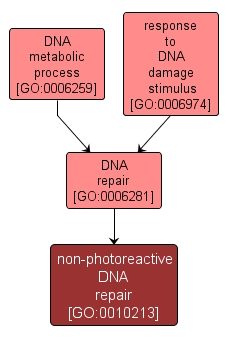GO TERM SUMMARY
|
| Name: |
non-photoreactive DNA repair |
| Acc: |
GO:0010213 |
| Aspect: |
Biological Process |
| Desc: |
A DNA repair process that is involved in repairing UV-induced DNA damage under non-photoreactivating conditions. The mechanism by which this repair process operates has not yet been completely elucidated. |
Synonyms:
- light-independent DNA repair
|
|

|
INTERACTIVE GO GRAPH
|














